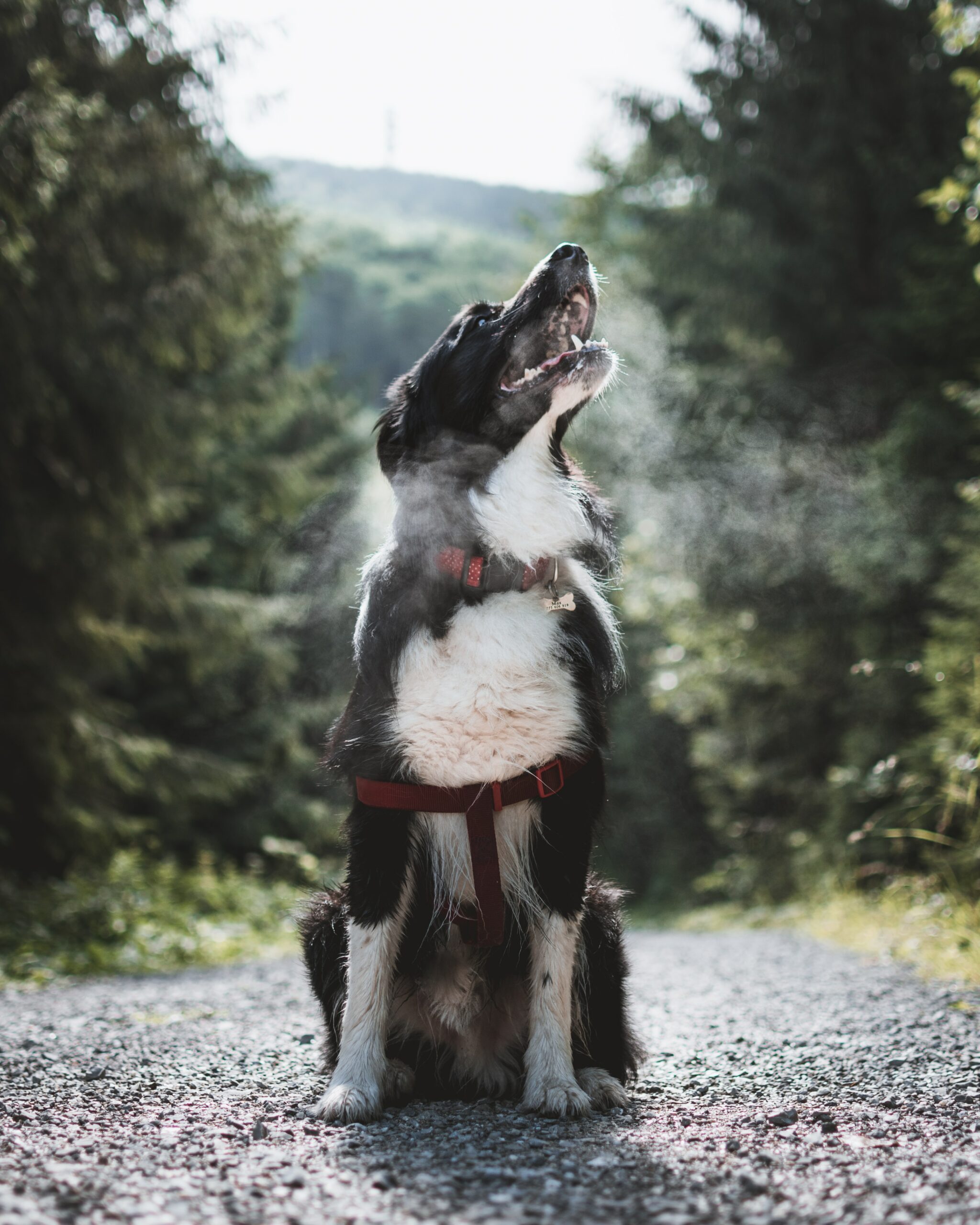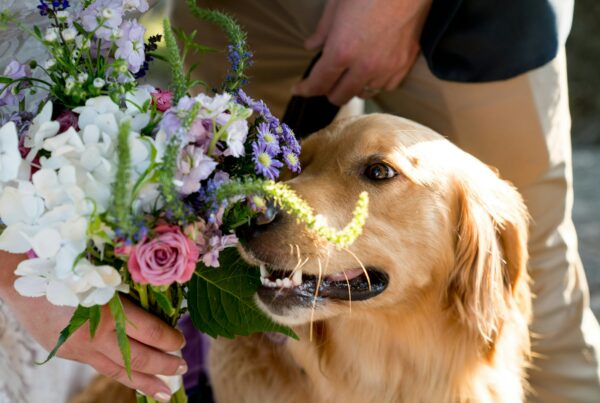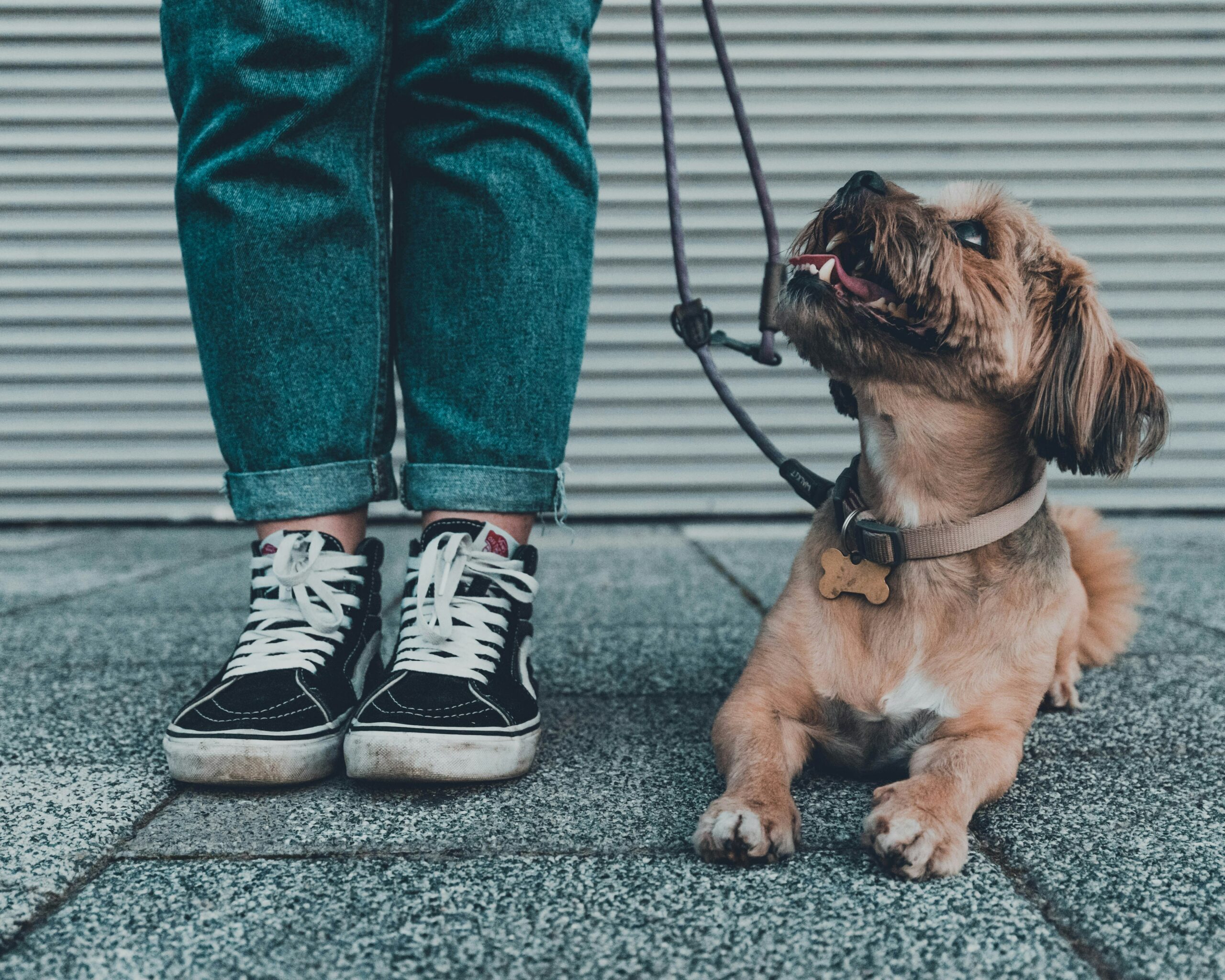Though it may look as though your dog is always prepared for winter with a lush, furry coat, the colder months can be challenging for your dog — especially when the temperatures drop to uncomfortable levels. Understanding when it’s too cold for your dog, and how to help your pet stay warm and toasty in those conditions, can make the coldest season of the year a lot more bearable for your four-legged friend.
Read on for tips to help your dog handle the cold weather and stay as comfortable as possible when things get chilly.
Check the Temperature Daily
The majority of canine companions can withstand temperatures above 20 degrees Fahrenheit, but anything below this level requires other measures to ensure your dog is safe and comfortable. Make a habit of looking up the forecast so that you can be aware of the current weather conditions for your dog, particularly if they will be spending any time outside. This will help you to know when it’s time to break out the fleece fabric apparel and blankets and when your dog can wander around without any additional modifications as he or she does in other parts of the year.
Mind Your Dog’s Breed
The more fur your dog has on his or her body, the easier it will be for your pet to handle colder temperatures. Breeds with short hair, such as boxers, bulldogs, terriers, Chihuahuas and Great Danes, may be more sensitive to colder temperatures than breeds with longer or thicker fur such as retrievers, collies, malamutes, huskies or Saint Bernard dogs.
Watch For Signs
Though dogs won’t be able to tell you that they’re feeling cold, they do demonstrate observable behaviors that can let you know when the cold has begun to affect them. Many dogs exhibit cold-like symptoms such as a runny nose, congestion, lethargy, sneezing, watering eyes or a low fever. Other symptoms include loss of appetite, whining, shivering or displays of anxiety, all of which could signal that it’s time to take measures to get your dog to a warmer place.
Keep Your Dog Inside
While the outdoors provide plenty of space for your dog to run and play, the inside of your home is generally insulated and temperature-controlled and is much safer for your pet when it gets uncomfortably cold outside. Keep your canine inside as often as possible, and make sure to leave the thermostat at a comfortable temperature for your dog while you’re away.
Outfit the Doghouse
If your dog spends the majority of his or her time outside, or your pet splits time between an outside kennel and the inside of your home, it’s important he or she has a very warm, safe and dry place to rest while outside. Invest in an insulated kennel or doghouse that can be equipped with heat lamps and blankets to keep your dog comfortable while outside. Keep in mind that it’s rarely safe to allow your dog to sleep outside during the winter. If necessary, move a kennel or doghouse into the garage where it’s warmer, or bring your dog inside during the night to keep your pet safe and warm.
Create a Warm Sleeping Spot
A soft, warm and safe spot for your dog to lay his or her head can go a long way in protecting your dog from the effects of the cold. Upgrade the bed to a warmer one, either by replacing the materials entirely with more insulative fabrics or by adding warmer blankets to their setup. You can also move the bed to a warmer spot nearer to a heater or away from walls and windows that could let in a draft. Take caution when moving your dog’s bed, however, and make sure to choose a spot that won’t inadvertently result in overheating or feelings of heat discomfort.
Get the Right Winter Gear
When it is time to head outside, your dog’s natural coat should protect the animal in above-freezing temperatures. Still, it’s a good idea to add additional protection to avoid discomfort while outside or after you head back indoors.
Snow Jackets
Jackets are more than just a cute accessory for your dog. Especially helpful for canines with short or thin hair, jackets can help your pet to stay comfortable and dry when out for walks or hikes in the snow. Keep in mind that thicker jackets or those with a great deal of insulation can actually cause your dog to overheat, depending on the breed. Do some research to make sure the jacket you select for your dog is not only weatherproof but will keep your dog at a comfortable temperature, too.
Sweaters
Dog sweaters can provide a great deal of extra warmth both inside and outside and can help small, skinny or short-haired dogs to retain body heat during the winter. Long-haired dogs may also benefit from a sweater, but it’s important to make sure that you remove it periodically to brush through their fur to prevent knots or matting. Regardless of your dog’s fur length, make sure to rotate sweaters and wash them frequently, especially if they don’t one more often than not.
Booties
Dog boots are not always necessary for outdoor walks, but they can go a long way in protecting your dog from cold ice and snow, as well as objects that could get caught in his or her paws or irritate them. Special dog boots are great for dogs who are already used to having their paws handled, but any dog can become accustomed to wearing boots with a little training.
To introduce your dog to wearing boots, start indoors with one boot at a time and plenty of treats to make the experience more enjoyable. As soon as your dog is comfortable with all four boots, you can safely head outside for walks and hikes in the snow without worrying about the booties getting kicked off or having to cut your walk short due to discomfort.
Paw Wax
The softer underside of your dog’s paws is surprisingly sensitive to cold temperatures, and environmental hazards such as abrasive salts or materials on the sidewalk can negatively affect his or her paws to a greater degree when it’s cold. Treat cracks and provide an added layer of protection with dog-friendly paw wax applied to the soft areas of their feet.
Goggles
On winter days when the sun is especially bright, the light reflecting off of the snow can be harmful to your dog’s eyes. As well, the wind and snow can get into your dog’s eyes and cause irritation or soreness while outside and well after you come inside. Some dog breeds with light-colored eyes should have dog-friendly goggles if they are going to be spending a great deal of time outdoors during the winter.
Keep Your Dog Dry
Nobody likes the wet shoes, pants, feet, hair or hands that often come with outdoor play in the winter, and that includes your canine family members, too. Dogs that are taken outside for walks or let out to play in the snow may come back inside covered in snow or rain, which can leave their fur feeling wet for hours and contribute to long-lasting feelings of coldness even while they’re back inside to warm up. Make sure to brush the snow off of your dog or find a towel to absorb some of the moisture in their fur so they can maintain a comfortable temperature.
After giving dogs a bath, it’s also important to let their fur dry completely before you take or let them outside. Any wet fur could quickly freeze or get frosty in extreme temperatures, which compromises the natural insulation your dog has to keep his or her body warm. Wet fur will only cause your dog’s body temperature to drop.
Finally, if your dog has an outdoor doghouse, it’s important to find ways to elevate its resting area so that it’s well off the ground away from ground level. Try to raise the entire kennel or dog house off the ground at least a few inches. This will not only help your dog to stay dry while outside, but it will also help to keep the place warmer, as being too close to the ground can actually steal heat away from the shelter.
Ensure Your Dog is Comfortable This Winter
The best plan of action is to prevent your dog from getting cold well before things could become uncomfortable, or even dangerous, for your pet. Make sure your dog is well fed and watered, facilitating access to clean, fresh and unfrozen meals and water bowls whether your pet spends time indoors or outdoors.
Conclusion
Keep an eye on the conditions and take steps to make sure your dog has everything he or she will need to feel cozy and happy regardless of the outdoor temperatures. With these tips, you’ll have everything you need to both get ahead of the cold and take care of your dog when he or she does demonstrate a sensitivity to the chill.
photo credit: https://unsplash.com/photos/lnz5xDacgvA
Love our content? Share it with a friend or link it to social media. Like short clips of cute household pets? Training tips? Follow us on instagram @nydognanny or on YouTube at nydognanny. Have some news you needs to get to dog and cat parents stat? Email info@newyorkdognanny.com with your article pitch.




